#louis brabant
Explore tagged Tumblr posts
Text
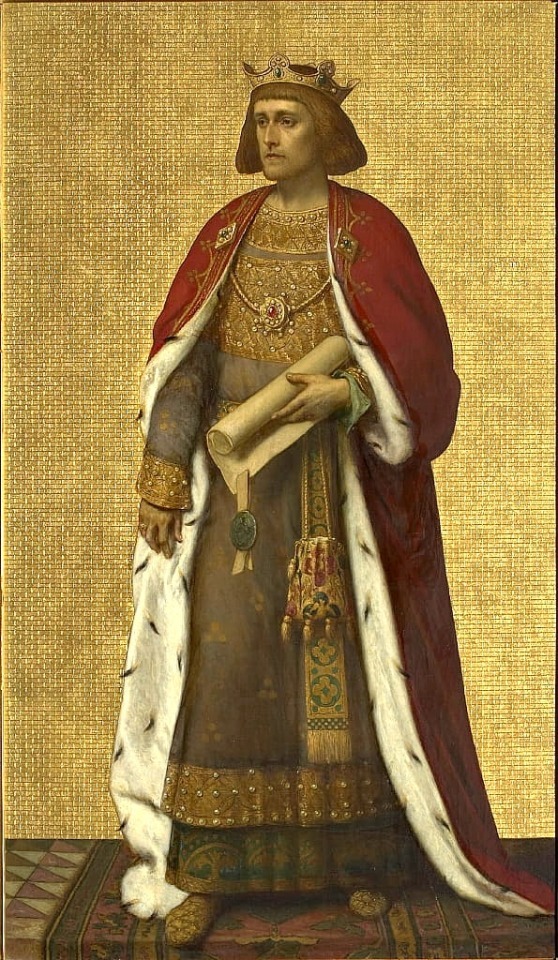
Philip the Fair (Philip the Handsome), Lord of the Netherlands. By Louis Gallait.
#louis gallait#haus habsburg#the netherlands#Koninkrijk der Nederlanden#Koninkrijk België#Royaume de Belgique#kingdom of belgium#Philip the Handsome#Lord of the Netherlands#duke of burgundy#king of castile#king of leon#duke of brabant#duke of limburg#count of artois#count of holland#count of flanders#count of zeeland#full length portrait#house of habsburg#monarquía española#reyes de españa#rey de castilla#casa de austria#felipe i#felipe el hermoso#full-length portrait#bourgogne#comte de flandre#duc de brabant
15 notes
·
View notes
Text

#IFTTT#Giphy#giphyupload#reaction#happy#dance#game#fun#party#dancing#meme#gaming#cool#crazy#friday#vr#louis#virtual reality#brabant#migporc#game vr#louis brabant
0 notes
Text
Pétion and Robespierre power couple descriptions compilation
One cannot speak about Robespierre without thinking about Péthion [sic]. Desmoulins in number 55 of Révolutions de France et de Brabant (December 30 1790)
Where Pétion and Robespierre are, are the true friends of the Constitution. Tallien at the jacobins, July 25 1791
…the two Catos of the legislature, that is to say Pétion and Robespierre. Brissot in number 783 of Le Patriote Français (October 2 1791)
…the one of all my colleagues to whom I was most closely bound, by works, by principles, by common perils, as much as by the ties of the most tender of friendships. Robespierre on Pétion in his inaugural address as public prosecutor, held February 15 1792
I know [Pétion] is horrified of plots hatched against me: his heart has spilled over into mine; he cannot see without shuddering these horrible calumnies which assail me from all sides. Robespierre art the Jacobins, April 30 1792
It would be useless to try to divide us, you would have to stop loving liberty in order for me to stop loving you. Pétion in a letter to Robespierre, August 20 1792
I agree with Manuel on the comparison that he made in saying that Pétion and Robespierre were the twins of liberty; he meant that they were stars like Castor and Pollux; that they would appear in turn, but I ask that Robespierre be the summer star, and Pétion the winter star. Collot d’Herbois at the jacobins, November 5 1792
There was this great difference between Pétion and me — he had a particular deference for Robespierre, and I had an invincible aversion for this man who had the face of a cat. Memoirs of Buzot (1793)
[Pétion] had a kind of inexcusable weakness for Robespierre. Memoirs of Buzot (1793)
Inseparable friend of Robespierre, their principles were then so consistent and their intimacy so marked, that they were called the two fingers of the hand. Nouveau Tableau de Paris (1797) by Louis Sebastien Mercier
[Robespierre and Pétion] fought for the cause of the people, like two generous imitators who looked to surpass each other in noble sentiments. Mémoires de Charlotte Robespierre sur ses deux frères (1834)
#robespierre#pétion#pétitspierre#frev#frev compilation#french revolution#maximilien robespierre#jérôme pétion
58 notes
·
View notes
Note
Hey.
I constantly argue back and forth with TB stans that Jace, Luke and Joffrey aren't legitimised just because Laenor, Corlys and Viserys go along with Rhaenyra’s lie about them being "trueborn". As I'm sure you're aware, in Westeros only a king can legitimise the illegitimate by first declaring their bastardy and then legitimising them afterwards. And TB stans. Just. Don't. Get. It. They also seem to think that the King's word is law in Westeros. They don't understand that this a feudal monarchy where the king and his vassals are reliant upon each other and both must respect the social contract in order for the Westerosi social structures e.g. monarchy to be maintained.
IMO, they fall for the narrative trap of the Targaryen characters. Just because Viserys and Rhaenyra say that the King's word is law doesn't actually make it law. It's only law as long as the king has the ability to enforce it. Therefore, if a king did something insane in the eyes of his noble polity, e.g., try to place his bastards in the line of succession, they'd rebel proving accurately that the King's word is in fact not actually law. Aerys's overthrowing is a great example of this. As is the reign of Daeron II: if his word was law and everyone had to obey him, no one would have joined Daemon Blackfyre's rebellion.
Anyway back to TB stans. I think alot of them don't actually realise how the world works. Even GRRM confirmed the bastardy of Rhaenyra’s 3 son's for goodness sake. Every time they try to deny it using the aforementioned argument it only confuses me. Are they insecure about Rhaenyra having illegitimate children? Is that how far they're para-social relationship with her goes?
They also have another stupid argument that Rhaenyra's kids having her blood means that they can inherit her throne. No no no no no no no no no. THAT'S NOT HOW IT WORKS TB. If it was Westerosi lords with bastard relatives, it would allow them to inherit. You have to be trueborn. It's unfair but these unfair laws are what keeps Westeros from constant civil war. That's the point of inheritance law in the Seven Kingdoms.
Anyway, sorry about the rant. It's just that sometimes when I argue with certain TB stans they don't seem to understand the laws of the world they're fans of. They will bend over backwards to excuse their faves, not understanding that you are allowed to criticise a character you like (& in their case love). I think Rhaenyra is an interesting character - moreso in the book TBH - I just don't get why so many TB stans willfully refuse to understand the way in which the laws of the world she inhabits work. Any thoughts?
Hi anon, it took me forever to get to your ask but you're right! 💚
Not all TB stans share the same views, and there are people in here with whom you can converse intelligently, but I have also seen the discourse you're referring to, and it is very annoying when the stans don't get it.
You put the Westerosi legitimization process very well. If we consider the greater Middle Ages-inspired world-building context that Westeros is based on, it makes sense why bastardy is a stigmatized social issue. Blood "purity," lineage, and legitimacy are important because they are the only way land and titles are bequeathed and inherited.
The King is the only one who can legitimize his own illegitimate children as heirs, but he can do so for other illegitimate children, regardless of whether these are related to him by blood. King Louis IV, for example, legitimized John II Duke of Brabant's son, Jan Cordeken, after a petition John wrote to him thus enabling him to inherit his father's fortune and found the House of Glymes. From Ancient Egypt, Greece, and Rome to Enlightenment Europe, there are examples of Kings legitimizing not only their children but also the children of their officials, courtiers, and friends. It was seen as granting a favor to them, and when it came to personal matters, a King might choose to legitimize his children when he ran out of heirs, or in the case of Louis XIV, because he could and wanted to.
In other words, Viserys, who knew of but chose to ignore Rhaenyra's sons' (his grandsons') bastardy, had ample time and opportunity to legitimize them but chose to blind himself to the truth instead. What was that about Alicent calling Viserys "weak" in one of the deleted scenes of S1? Well, "weak" isn't the only word I would use to describe him... also irresponsible, foolish, and inadequate.
Nevertheless, the legitimization process in history was seldom favored by the court, the King's vassals, and the people, and caused quite a stir. As you say, the King's law didn't hold up that much ground compared to the law of tradition and at times the Church. The people didn't care if a King legitimized a child by naming them heir... the stigma of being born "illegitimate" wasn't washed off that easily, because bastards were seen as devilish, impure, half-breeds, unnatural hybrids, and so forth. So Viserys choosing to ignore the issue face front was bound to be catastrophic, because no matter how he tried to silence the tongues that wagged by threatening to cut them off, the issue of his grandsons' apparent bastardy remained, and THE REALM would not accept any of them on the Iron Throne, for the same reasons.
And Viserys did nothing about it. He could have confronted Rhaenyra when Jace was born and reminded her of the stark reality of the consequences of what she was doing. Not only did he name Rhaenyra (a woman) as his heir, which alone was controversial and unprecedented, but a woman with three illegitimate children, whose existence never even tried to correct or prevent. Viserys alone weakened Rhaenyra's claim with his lack of foresight and counsel.
If TB uphold the "Viserys loved his grandsons and he accepted them as they were" narrative, they are not only deluded but lack media literacy as well, because Viserys DIDN'T CARE if his grandsons were trueborn or not, or if that would plunge the realm to war, the same way he didn't care that he had named Rhaenyra as his successor when the realm, who was so used to having Kings for centuries, knew he had THREE legitimate sons of his own.
So my two cents on the discourse would basically be that those who don't understand the social and political repercussions of Rhaenyra having bastards, not being counseled as to why this is destructive, left on her own to raise them, and having to cope with the consequences of her actions as she realizes that the father she so loved and admired didn't protect or support her at all, are missing out on a much more interesting character in Rhaenyra and a more complex dynamic with her sons, who she now understands are exceptionally vulnerable and potentially threatening to her cause.
This is a far more intriguing reading than anything TB stans are getting at with their "no criticism" ban on Viserys and Rhaenyra.
#this turned out to be an anti viserys post and I think it was about time#thanks for the ask!#dracarys on viserys#anti viserys i targaryen#anti tb stans#hotd#house of the dragon#hotd season 2#hotd s2#team green#the greens#house of the dragon season 2#hotd meta#hotd discourse#greenqueenasks#greenqueenhightower
57 notes
·
View notes
Text


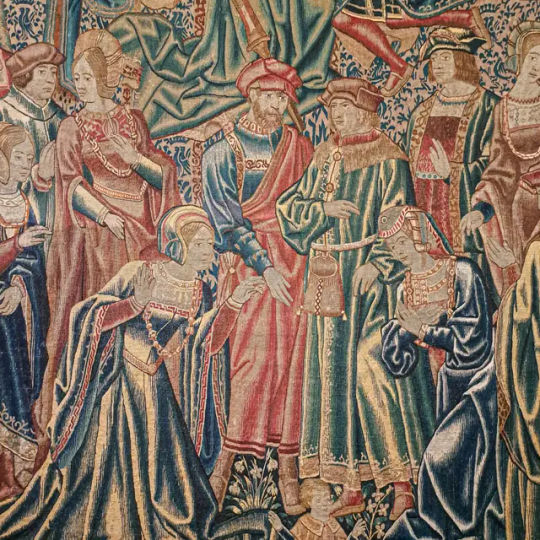


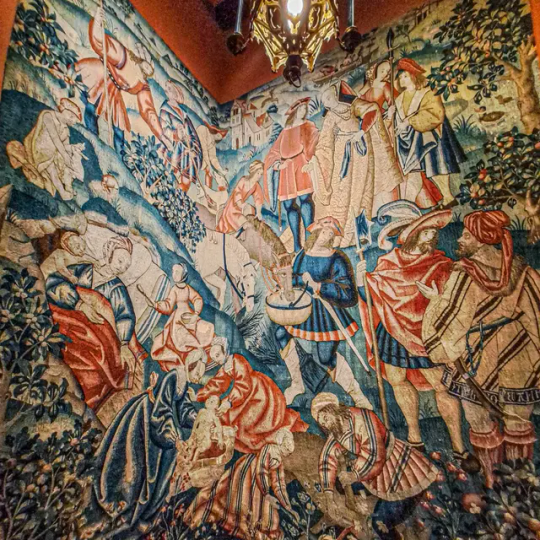
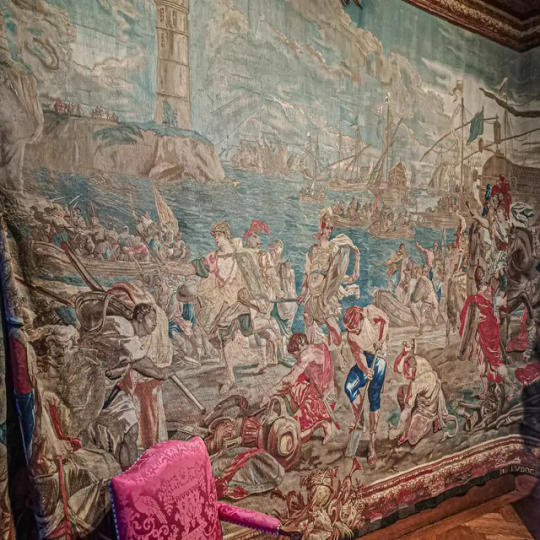
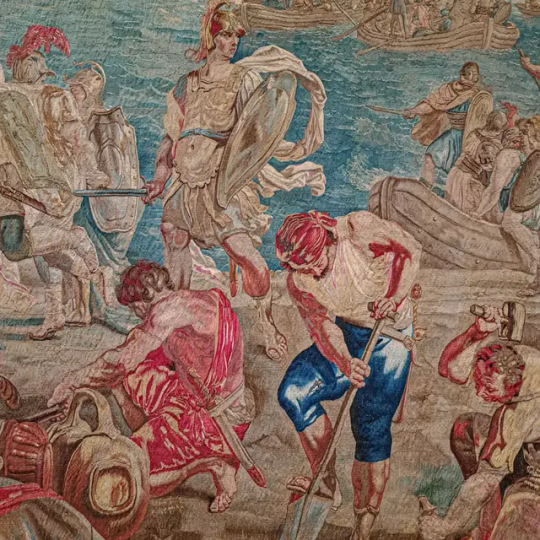
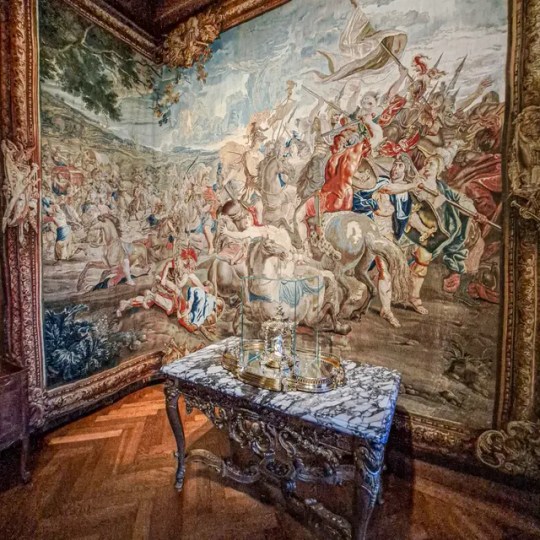
The beauty of Flemish tapestries.
From the 13th century till the 17th century, Flanders, Hainaut and Brabant were the epicentres of tapestry making. It were the most expensive pieces of art ( more expensive than paintings for example) from the Middle Ages till halfway the baroque period. They sometimes had silver or gold woven in it to give it more lustre. Initially only for sovereigns and the highest eclastical individuals, made on commission. The cartoons were originally made by the weavers, later by local artists, and later cartoons were sometimes made abroad and send to be woven in the workshops of the Southern Netherlands (read: Belgium and Northern France). Cities of tapestry making were among others. Atrecht (Arras : in italian tapestry are arazzi), Bruges, Tournai, Edingen, Oudenaarde, Geraardsbergen, Brussels. Even though Flanders was only one of the counties of the Southern Netherlands, the concept of Flemishis apllied to a wider area were Flemish culture was spread.
After Louis XIV broke the monopolies of the workshops in the Southern Netherlands after conquering territorirs during the Wars of the Spanish Succession, he brought over weavers from those lands and the Manufacture des Gobelins near Paris was being established, since then the French created their own style of tapestries, along with a reviving of a production in Aubusson, were flemish weaving techniques were already introduced during the 14th century and a small regional production was already established for wall and floor tapestry and for upholstery.
Many tapestries located in the areas conquered by the French Revolutionist mobs were burned in an attempt to retrieve the silver and gold ... resulting in the fact there are seemingly more surviving flemish (and french) tapestries to be found in England, Spain or Italy.
But the tapestries in this post, these are on display in the Castle of Gaasbeek, located south west of Brussels. They belong to a collection that was established during the 19th century.
One of the series of tapestries in the castle are the so-called Carrabara or Gypsy Suite dates from the Tournai studio of Arnould Poissonier and dates from ca. 1500-1525.
During the Flemish Renaissance period (sixteenth century), Tournai was one of the most important centers for tapestry production. People mainly wove with wool and silk. Typical details are the strongly defined folds in the clothing and the grass tufts that protrude everywhere in the landscape. Tournai carpets were known for their intense, contrasting colours. This is still noticeable, although the colors have faded. For example, the yellow has almost disappeared, making the green – which consists of a mixture of blue and yellow – increasingly bluer.
Gypsies used to be very distrusted, as a strange people of musicians, dancers and fortune tellers, but at the same time they were fascinating because of their unclear origins and their colorful customs. So ideal inspiration to make a tapestry about, as a conversation piece.
#historic buildings#historical#belgium#history#art history#historical interior#flanders#tapestry#tapestries#flemish art#flemish#flandes#flandres#flandern#fiandre#kasteel#chateau#kasteelvangaasbeek#tapisserie#arazzi#renaissance art#renaissance#baroque#decorative arts#arte#artwork#art#beautiful#amazing beauty#europe
30 notes
·
View notes
Text
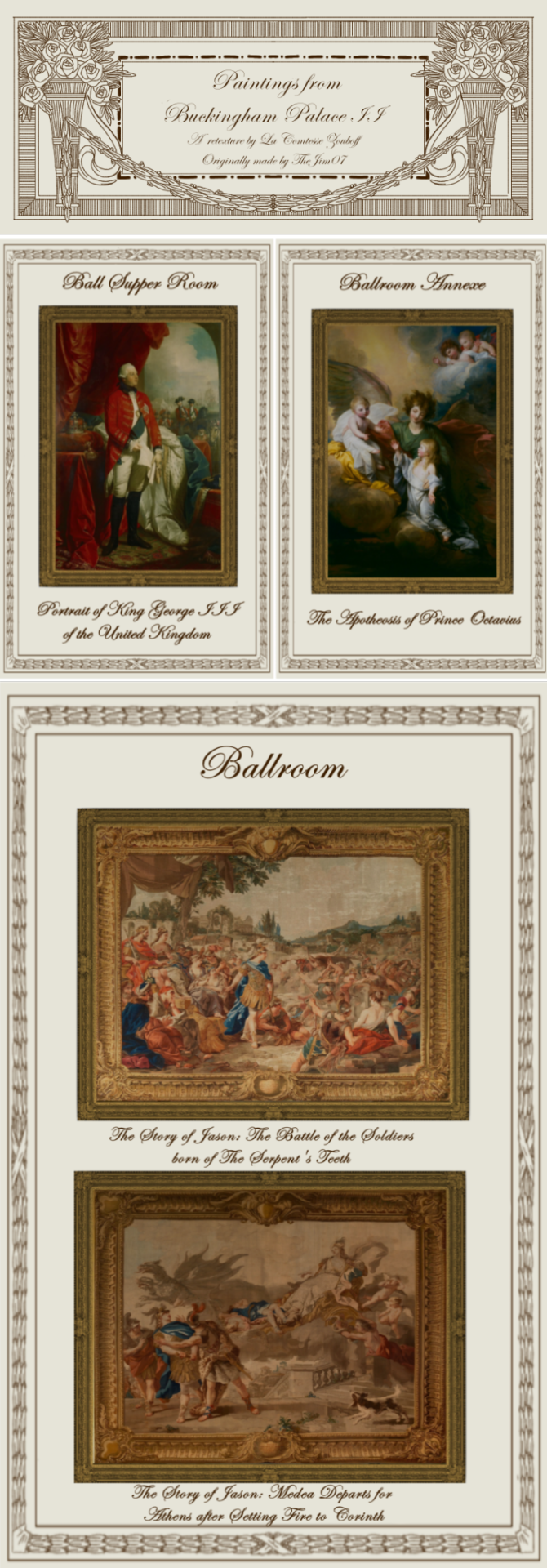
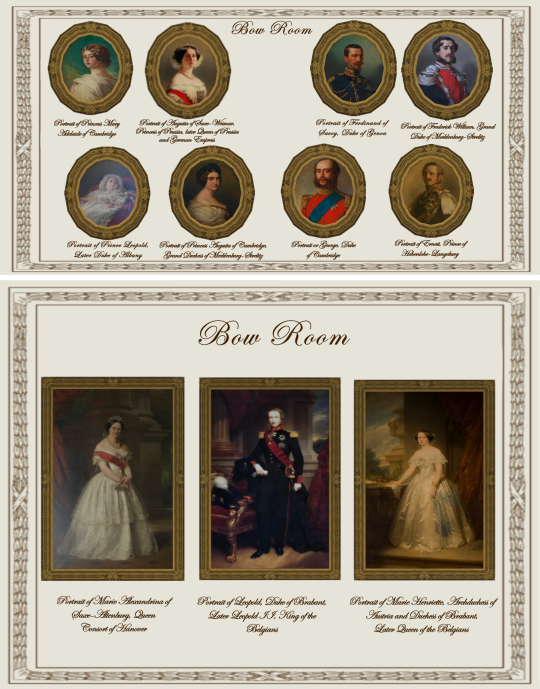
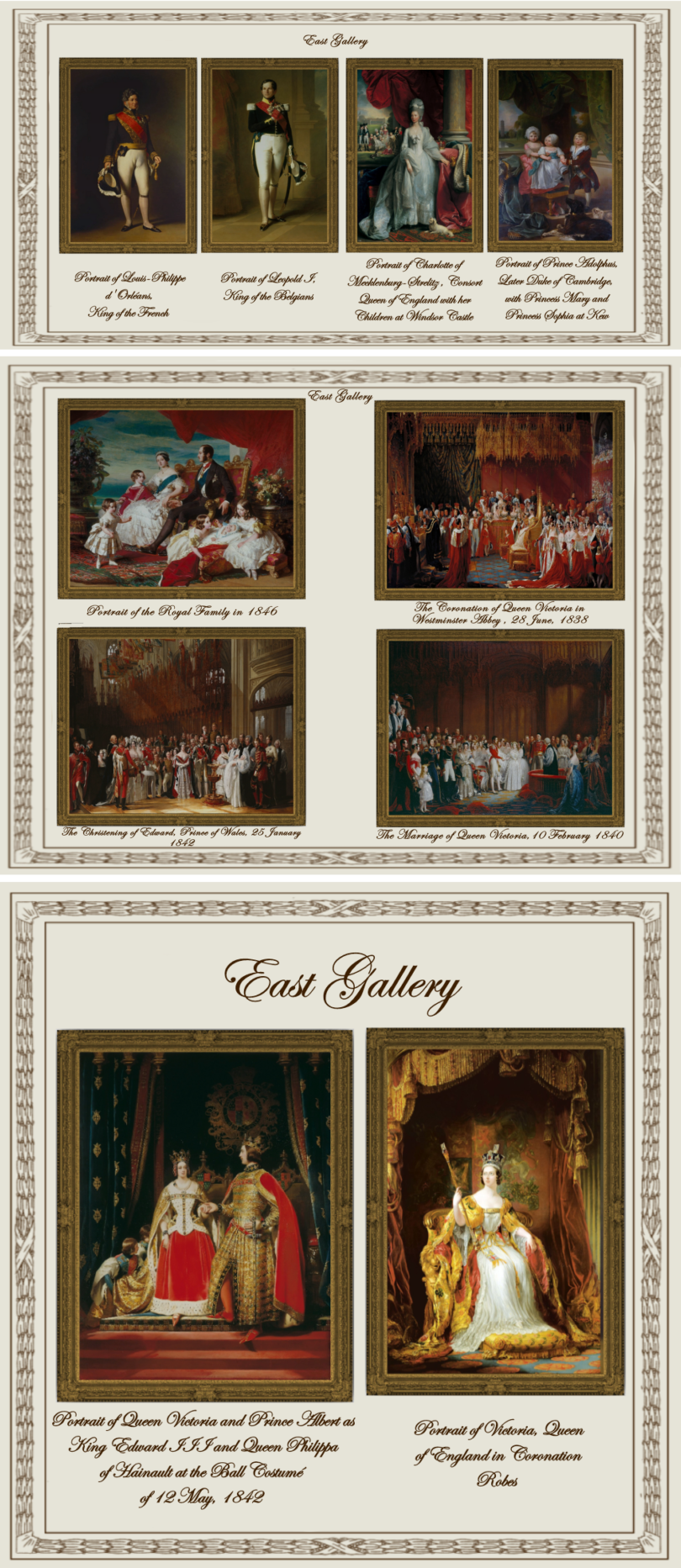
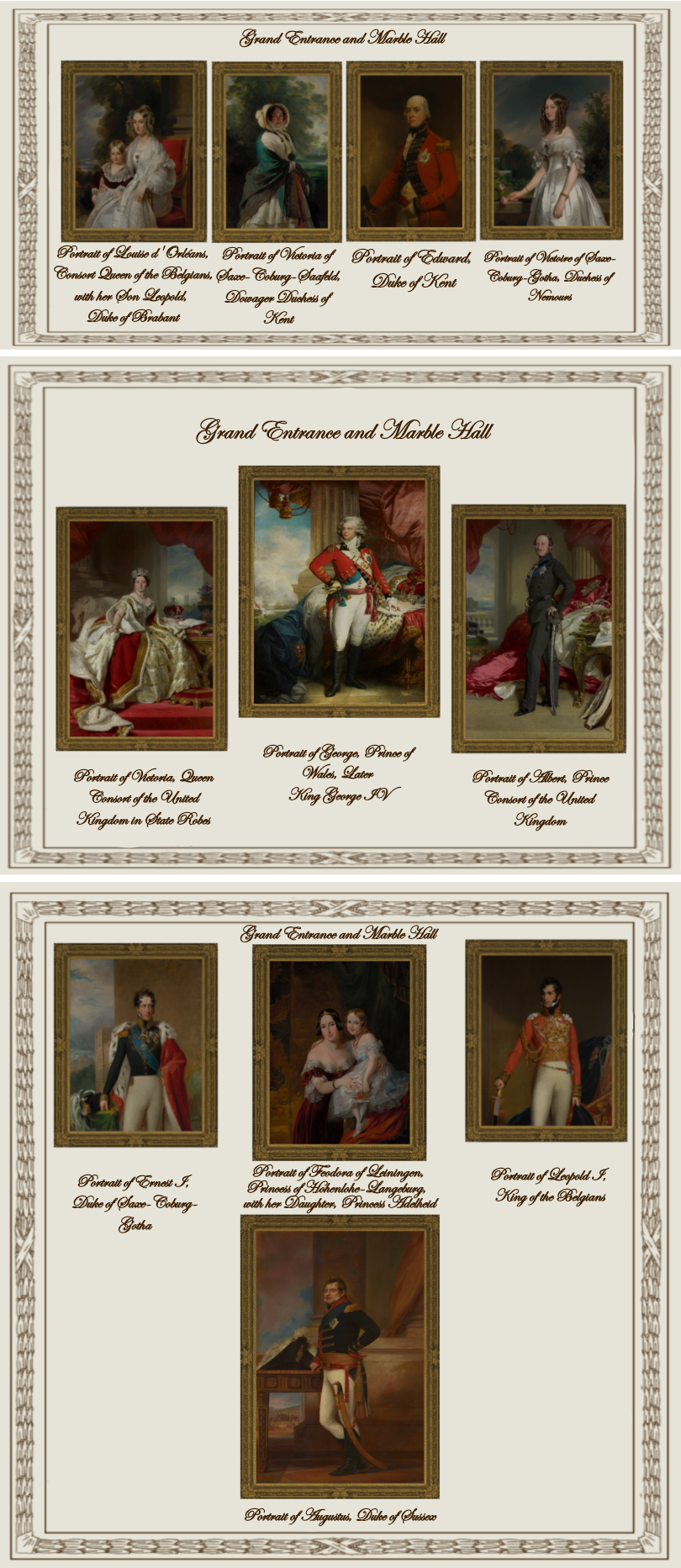

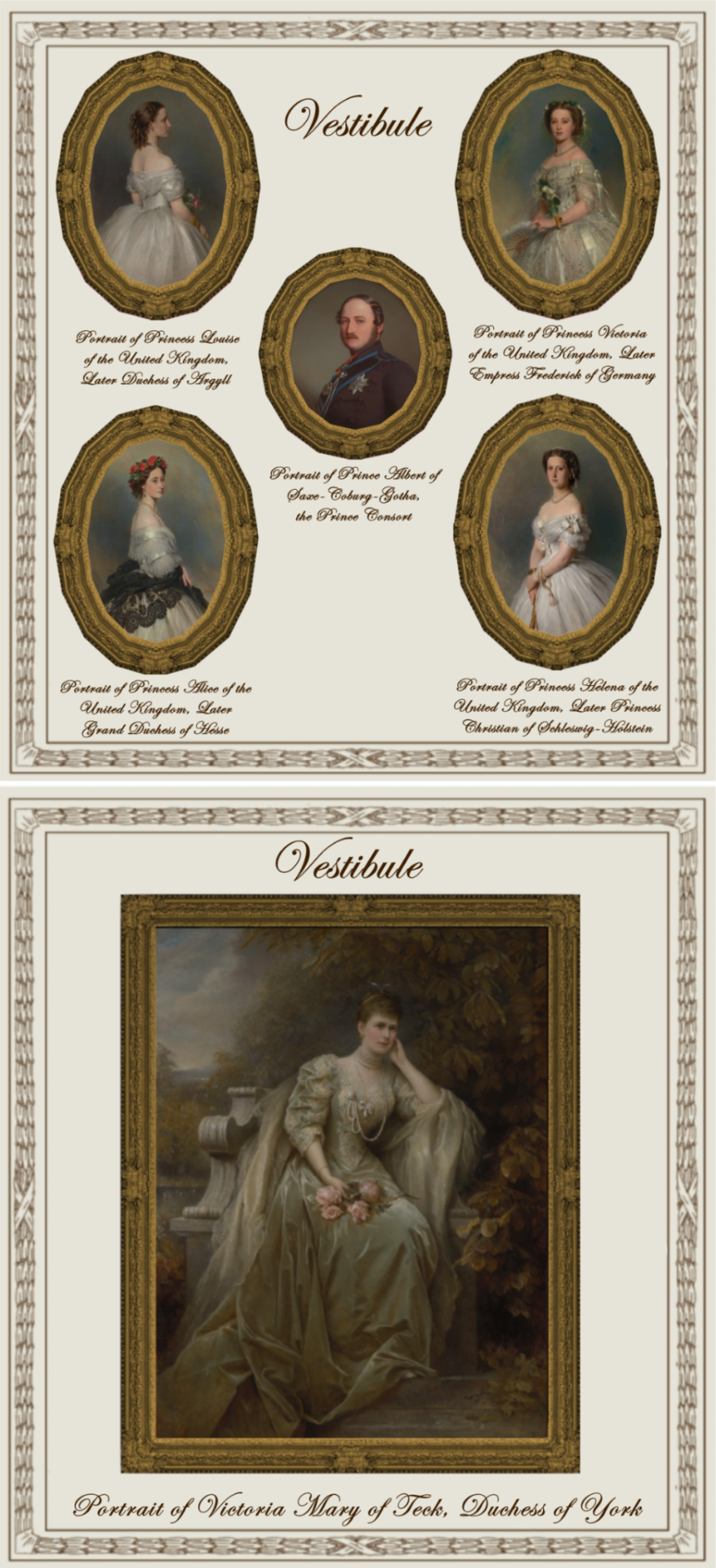
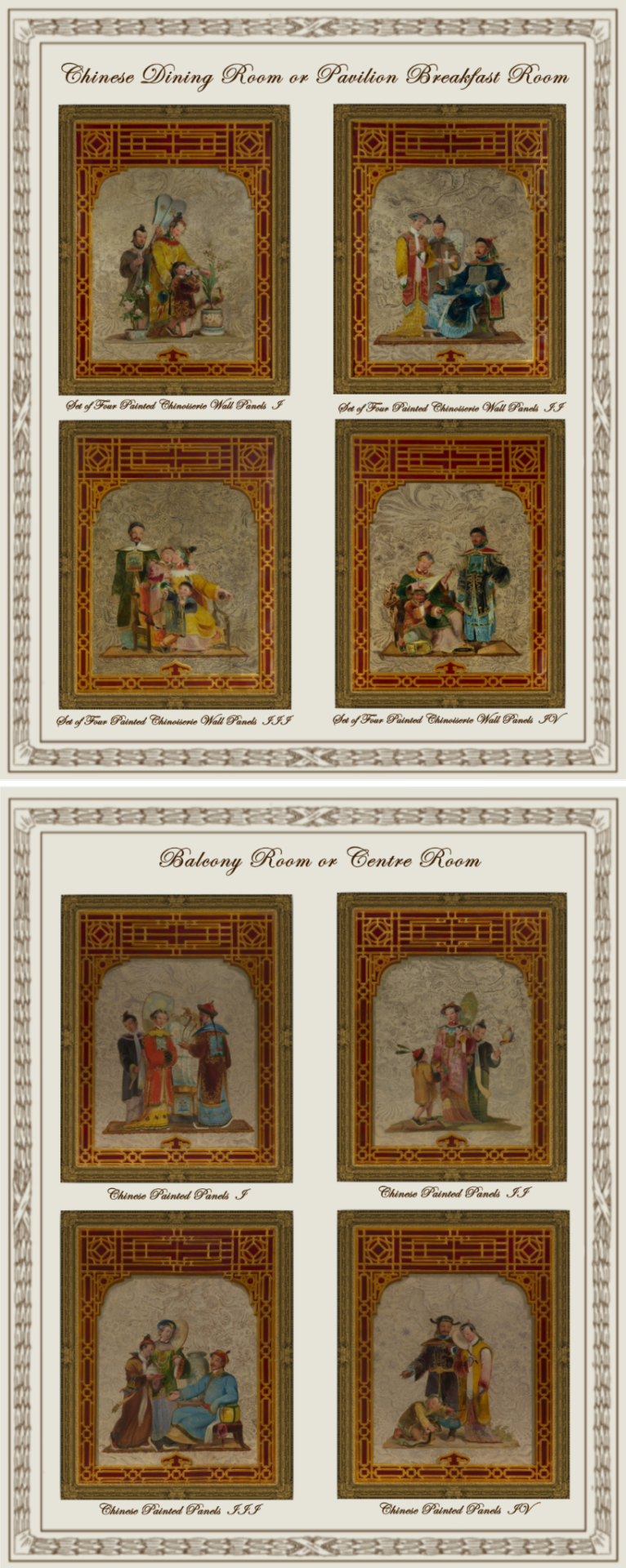

Paintings from Buckingham Palace: part II
A retexture by La Comtesse Zouboff — Original Mesh by @thejim07
Spread among 13 occupied and historic royal residences in the United Kingdom, the collection is owned by King Charles III and overseen by the Royal Collection Trust. The British monarch owns some of the collection in right of the Crown and some as a private individual. It is made up of over one million objects, including 7,000 paintings, over 150,000 works on paper, this including 30,000 watercolours and drawings, and about 450,000 photographs, as well as around 700,000 works of art, including tapestries, furniture, ceramics, textiles, carriages, weapons, armour, jewellery, clocks, musical instruments, tableware, plants, manuscripts, books, and sculptures.
Some of the buildings which house the collection, such as Hampton Court Palace, are open to the public and not lived in by the Royal Family, whilst others, such as Windsor Castle, Kensington Palace and the most remarkable of them, Buckingham Palace are both residences and open to the public.
About 3,000 objects are on loan to museums throughout the world, and many others are lent on a temporary basis to exhibitions.
-------------------------------------------------------
The second part includes paintings displayed in the Ball Supper Room, the Ballroom, the Ballroom Annexe, the Bow Room, the East Gallery, the Grand Entrance and Marble Hall, the Minister's Landing & Staircase, the Vestibule, the Chinese Dining Room and the Balcony Room.
This set contains 57 paintings and tapestries with the original frame swatches, fully recolourable. They are:
Ball Supper Room (BSR):
Portrait of King George III of the United Kingdom (Benjamin West)
Ballroom (BR):
The Story of Jason: The Battle of the Soldiers born of The Serpent's Teeth (the Gobelins)
The Story of Jason: Medea Departs for Athens after Setting Fire to Corinth (the Gobelins)
Ballroom Annexe (BAX):
The Apotheosis of Prince Octavius (Benjamin West)
Bow Room (BWR):
Portrait of Princess Mary Adelaide of Cambridge (William Corden the Younger)
Portrait of Princess Augusta of Cambridge, Grand Duchess of Mecklenburg-Strelitz (Alexander Melville)
Portrait or George, Duke of Cambridge (William Corden the Younger)
Portrait of Frederick William, Grand Duke of Mecklenburg-Strelitz (Franz Xaver Winterhalter)
Portrait of Augusta of Saxe-Weimar, Princess of Prussia, later Queen of Prussia and German Empress (Franz Xaver Winterhalter)
Portrait of Prince Leopold, Later Duke of Albany (Franz Xaver Winterhalter)
Portrait of Ernest, Prince of Hohenlohe-Langeburg (Franz Xaver Winterhalter)
Portrait of Ferdinand of Savoy, Duke of Genoa (Eliseo Sala)
Portrait of Marie Alexandrina of Saxe-Altenburg, Queen Consort of Hanover (Carl Ferdinand Sohn)
Portrait of Leopold, Duke of Brabant, Later Leopold II, King of the Belgians (Nicaise de Keyser)
Portrait of Marie Henriette, Archduchess of Austria and Duchess of Brabant, Later Queen of the Belgians (Nicaise de Keyser)
East Gallery (EG):
Portrait of Leopold I, King of the Belgians (Franz Xaver Winterhalter)
Portrait of Victoria, Queen of England in Coronation Robes (Sir George Hayter)
Portrait of Louis-Philippe d'Orléans, King of the French (Franz Xaver Winterhalter)
Portrait of Charlotte of Mecklenburg-Strelitz, Consort Queen of England with her Children at Windsor Castle (Benjamin West)
Portrait of Prince Adolphus, later Duke of Cambridge, With Princess Mary and Princess Sophia at Kew (Benjamin West)
The Coronation of Queen Victoria in Westminster Abbey, 28 June, 1838. (Sir George Hayter)
The Christening of Edward, Prince of Wales 25 January, 1842 (Sir George Hayter)
The Marriage of Queen Victoria, 10 February, 1840 (Sir George Hayter)
Portrait of the Royal Family in 1846 (Franz Xaver Winterhalter)
Portrait of Queen Victoria and Prince Albert as King Edward III and Queen Philippa of Hainault at the Ball Costumé of 12 May, 1842 (Sir Edwin Landseer)
Grand Entrance and Marble Hall (GEMH):
Portrait of Edward, Duke of Kent (John Hoppner)
Portrait of Ernest I, Duke of Saxe-Coburg-Gotha (George Dawe)
Portrait of Victoria of Saxe-Coburg-Saafeld, Dowager Duchess of Kent (Franz Xaver Winterhalter)
Portrait of Albert, Prince Consort of the United Kingdom (Franz Xaver Winterhalter)
Portrait of Victoria, Queen Consort of the United Kingdom in State Robes (Franz Xaver Winterhalter)
Portrait of Louise d'Orléans, Consort Queen of the Belgians, with her Son Leopold, Duke of Brabant (Franz Xaver Winterhalter)
Portrait of Feodora of Leiningen, Princess of Hohenlohe-Langeburg, with her Daughter, Princess Adelheid (Sir George Hayter)
Portrait of George, Prince of Wales, Later King George IV (Mather Byles Brown)
Portrait of Victoire of Saxe-Coburg-Gotha, Duchess of Nemours (Franz Xaver Winterhalter)
Portrait of Augustus, Duke of Sussex (Domenico Pellegrini)
Portrait of Leopold I, King of the Belgians (William Corden the Younger)
Minister's Landing and Staircase (MLS):
Portrait of George, Prince of Wales in Garther Robes (John Hoppner)
The Loves of the Gods: The Rape of Europa (the Gobelins)
The Loves of the Gods: The Rape of Proserpine (The Gobelins)
Vestibule (VL):
Portrait of Prince Albert of Saxe-Coburg-Gotha, the Prince Consort (Unknown Artist from the German School)
Portrait of Princess Alice of the United Kingdom, Later Grand Duchess of Hesse (Franz Xaver Winterhalter)
Portrait of Princess Helena of the United Kingdom, Later Princess Christian of Schleswig-Holstein (Franz Xaver Winterhalter)
Portrait of Princess Louise of the United Kingdom, Later Duchess of Argyll (Franz Xaver Winterhalter)
Portrait of Princess Victoria of the United Kingdom, Later Empress Frederick of Germany (Franz Xaver Winterhalter)
Portrait of Victoria Mary of Teck, Duchess of York (Edward Hughes)
Chinese Dining Room or Pavilion Breakfast Room(CDR):
Set of Four Painted Chinoiserie Wall panels I (Robert Jones)
Set of Four Painted Chinoiserie Wall panels II (Robert Jones)
Set of Four Painted Chinoiserie Wall panels III (Robert Jones)
Set of Four Painted Chinoiserie Wall panels IV (Robert Jones)
Balcony Room or Centre Room (BR):
Chinoiserie Painted Panel I (Robert Jones)
Chinoiserie Painted Panel II (Robert Jones)
Chinoiserie Painted Panel III (Robert Jones)
Chinoiserie Painted Panel IV (Robert Jones)
EXTRAS! (E):
I decided to add the rest of the tapestries from the story of Jason (wich hangs in the Grand Reception Room at Windsor Castle) and (with Jim's permission) added the original mesh for paintings number 2,3,4 & 5 from the Vestibule (seen here and here) wich was never published. These items are:
The Story of Jason: Jason Pledges his Faith to Medea (the Gobelins)
The Story of Jason: Jason Marries Glauce, Daughter of Creon, King of Thebes (the Gobelins)
The Story of Jason: The Capture of the Golden Fleece (the Gobelins)
The Story of Jason: The Poisoning of Glauce and Creon by Medea's Magic Robe (the Gobelins)
Sea Melodies (Herbert James Draper) (made by TheJim07)
-------------------------------------------------------
Found under decor > paintings for:
500§ (BWR: 1,2,3,4,5,6, & 8 |VL: 1)
570§ (VL: 2,3,4 & 5 |E: 5)
1850§ (GEMH: 1 & 3)
2090§ (GEMH: 2,6,7, 9 & 11)
3560§ (GEMH: 4,5 & 10 |BSR: 1 |EG: 1,2,3,4 & 5 |MLS: 1 |BAX: 1)
3900§ (CDR: 1,2,3 & 4 |BR: 1,2,3 & 4 |EG: 10 |VL: 6 |GEMH: 8)
4470§ (MLS: 2 |E: 1)
6520§ (BR 1 & 2| MLS: 3 |EG: 6,7,8 & 9 |BR: 1 & 2 |E: 2,3 & 4)
Retextured from:
"Saint Mary Magdalene" (BWR: 1,2,3,4,5,6, & 8 |VL: 1) found here.
"Sea Melodies" (VL: 2,3,4 & 5 |E: 5)
"The virgin of the Rosary" (GEMH: 1 & 3) found here.
"Length Portrait of Mrs.D" (GEMH: 4,5 & 10 |BSR: 1 |EG: 1,2,3,4 & 5 |MLS: 1 |BAX: 1) found here
"Portrait of Maria Theresa of Austria and her Son, le Grand Dauphin" (CDR: 1,2,3 & 4 |BR: 1,2,3 & 4 |EG: 10 |VL: 6 |GEMH: 8) found here
"Sacrifice to Jupiter" (MLS: 2 |E: 1) found here
"Vulcan's Forge" (BR 1 & 2| MLS: 3 |EG: 6,7,8 & 9 |BR: 1 & 2 |E: 2,3 & 4) found here
(you can just search for "Buckingham Palace" using the catalog search mod to find the entire set much easier!)
Disclaimer!
Some paintings in the previews look blurry but in the game they're very high definition, it's just because I had to add multiple preview pictures in one picture to be able to upload them all! Also sizes shown in previews are not accurate to the objects' actual sizes in most cases.

Drive
(Sims3pack | Package)
(Useful tags below)
@joojconverts @ts3history @ts3historicalccfinds @deniisu-sims @katsujiiccfinds @gifappels-stuff
-------------------------------------------------------
#the sims 3#ts3#sims 3#s3cc#sims 3 cc#sims 3 download#sims 3 decor#edwardian#victorian#regency#georgian#buckingham#buckingham palace#wall decor#sims 3 free cc#large pack#this was exhausting
65 notes
·
View notes
Photo
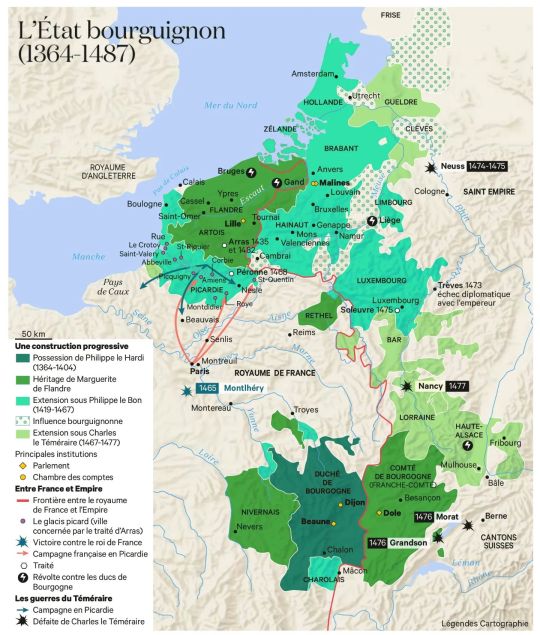
The Burgundian state, 1364-1487.
« Atlas historique mondial », Christian Grataloup, Les Arènes/L'Histoire, 2e éd., 2023
by cartesdhistoire
In 1363, the king of France, John the Good, gave Burgundy as an appanage to his son Philippe the Bold. Duke until 1404, he became master of a vast area, including Charolais, Artois, Franche-Comté, Rethel, Nevers and Brabant. His power made Flanders independent and it was a solid base for expansion in the Empire, continued by Duke Philip the Good (1419-1467): Namur, Hainaut, Holland, Zeeland and Luxembourg ( in addition to a nebula of satellites like the ecclesiastical principalities of Liège, Utrecht and even Cologne).
The Burgundian “State” is therefore made up of two blocks of territories, both shared between France and the Empire: Burgundy (France) and Franche-Comté (Empire) are governed from Dijon; from Lille then from Brussels from 1430, Flanders, Artois (France) and the Netherlands (Empire). The frequent meeting of States within the framework of each province allows regular taxation, which makes the Duke one of the richest sovereigns in the West, the bulk of his income coming from Flanders and the Netherlands. The administrative structure is close to that of the French monarchy (aids, Chambers of Accounts, states, Parliament).
Duke Charles the Bold (1467-1477) tried to reunite the two blocks, barely 60 km apart after 1441. He centralized, increased taxes and borrowed enormous sums from banks to obtain an imposing army and artillery. He then aimed for Lorraine and the archbishopric of Cologne but his ambitions united his enemies against him: Louis XI, the emperor, Lorraine, Savoy and the Swiss. In 1475, the Swiss crushed Charles's army at Grandson and Morat then the duke died in 1477, trying to retake Nancy. He is succeeded by his daughter Marie who married Maximilien, son of the emperor. She died on March 27, 1482 and on December 23, the Treaty of Arras divided her inheritance between Valois and Habsburg.
44 notes
·
View notes
Text
Wives and Daughters of Holy Roman Emperors: Age at First Marriage
I have only included women whose birth dates and dates of marriage are known within at least 1-2 years, therefore, this is not a comprehensive list.
This list does not include women who died before their husbands were crowned Emperor. It spans between the beginning of the reign of Otto I (962 CE) and the end of the reign of Francis II (1806 CE).
The average age at first marriage among these women was 17. The sample size was 91 women. The youngest bride, Bianca Maria Sforza, was just 2 years old when she wed her first husband, who was himself 9. The oldest bride, Constance of Sicily, was 32 years old.
Adelaide of Italy, wife of Otto I, HRE: age 15 when she married Lothair II, King of Italy, in 947 CE
Liutgarde of Saxony, daughter of Otto I, HRE: age 15 when she married Conrad the Red, Duke of Lorraine, in 947 CE
Theophanu, wife of Otto II, HRE: age 17 when she married Otto in 972 CE
Cunigunde of Luxembourg, wife of Henry II, HRE: age 24 when she married Henry in 999 CE
Gisela of Swabia, wife of Conrad II, HRE: age 12 when she married Brun I of Brunswick in 1002 CE
Agnes of Poitou, wife of Henry III, HRE: age 18 when she married Henry in 1043 CE
Matilda of Germany, daughter of Henry III, HRE: age 11 when she married Rudolf of Rheinfelden in 1059 CE
Judith of Swabia, daughter of Henry III, HRE: age 9 when she married Solomon, King of Hungary in 1063 CE
Bertha of Savoy, wife of Henry IV, HRE: age 15 when she married Henry in 1066 CE
Agnes of Waiblingen, daughter of Henry IV, HRE: age 14 when she married Frederick I, Duke of Swabia in 1086 CE
Empress Matilda, wife of Henry V, HRE: age 12 when she married Henry in 1114 CE
Beatrice I, Countess of Burgundy, wife of Frederick I, HRE: age 13 when she married Frederick in 1156 CE
Beatrice, daughter of Frederick I, HRE: age 10 when she married Guillaume II, Count of Chalon in 1173 CE
Constance, Queen of Sicily, wife of Henry IV, HRE: age 32 when she married Henry IV in 1186 CE
Beatrice of Swabia, first wife of Otto IV, HRE: age 14 when she married Otto in 1212 CE
Maria of Brabant, second wife of Otto IV, HRE: age 24 when she married Otto in 1214 CE
Constance of Aragon, first wife of Frederick II, HRE: age 19 when she married Emeric of Hungary in 1198 CE
Isabella II of Jerusalem, second wife of Frederick II, HRE: age 13 when she married Frederick in 1225 CE
Isabella of England, third wife of Frederick II, HRE: age 21 when she married Frederick in 1235 CE
Margaret of Sicily, daughter of Frederick II, HRE: age 14 when she married Albert II, Margrave of Meissen in 1255 CE
Anna of Hohenstaufen, daughter of Frederick II, HRE: age 14 when she married John III Doukas Vatatzes in 1244 CE
Marie of Luxembourg, daughter of Henry VII, HRE: age 18 when she married Charles IV of France in 1322 CE
Beatrice of Luxembourg, daughter of Henry VII, HRE: age 13 when she married Charles I of Hungary in 1318 CE
Margaret II, Countess of Hainaut, wife of Louis IV, HRE: age 13 when she married Louis in 1324 CE
Matilda of Bavaria, daughter of Louis IV, HRE: age 10 when she married Frederick II, Margrave of Meissen in 1323 CE
Beatrice of Bavaria, daughter of Louis IV, HRE: age 12 when she married Eric XII of Sweden in 1356 CE
Anna von Schweidnitz, wife of Charles IV, HRE: age 14 when she married Charles in 1353 CE
Elizabeth of Pomerania, wife of Charles IV, HRE: age 16 when she married Charles in 1378 CE
Margaret of Bohemia, daughter of Charles IV, HRE: age 7 when she married Louis I of Hungary in 1342 CE
Catherine of Bohemia, daughter of Charles IV, HRE: age 14 when she married Rudolf IV, Duke of Austria in 1356 CE
Elisabeth of Bohemia, daughter of Charles IV, HRE: age 8 when she married Albert III, Duke of Austria in 1366 CE
Anne of Bohemia, daughter of Charles IV, HRE: age 16 when she married Richard II of England in 1382 CE
Margaret of Bohemia, daughter of Charles IV, HRE: age 8 when she married John III, Burgrave of Nuremburg in 1381 CE
Barbara of Cilli, wife of Sigismund, HRE: age 13 when she married Sigismund in 1405 CE
Elizabeth of Luxembourg, daughter of Sigismund, HRE: age 13 when she married Albert II of Germany in 1422 CE
Eleanor of Portugal, wife of Frederick III, HRE: age 18 when she married Frederick in 1452 CE
Kunigunde of Austria, daughter of Frederick III, HRE: age 22 when she married Albert IV, Duke of Bavaria in 1487 CE
Bianca Maria Sforza, wife of Maximilian I, HRE: age 2 when she married Philibert I, Duke of Savoy in 1474 CE
Margaret of Austria, daughter of Maximilian I, HRE: age 17 when she married John, Prince of Asturias in 1497 CE
Barbara von Rattal, daughter of Maximilian I, HRE: age 15 when she married Siegmund von Dietrichstein in 1515 CE
Dorothea of Austria, daughter of Maximilian I, HRE: age 22 when she married Johan I of East Frisia in 1538 CE
Isabella of Portugal, wife of Charles V, HRE: age 23 when she married Charles in 1526 CE
Maria of Austria, daughter of Charles V, HRE: age 20 when she married Maximilian II, HRE in 1548 CE
Joanna of Austria, daughter of Charles V, HRE: age 17 when she married John Manuel, Prince of Portugal in 1552 CE
Margaret of Parma, daughter of Charles V, HRE: age 14 when she married Alessandro de’ Medici, Duke of Florence, in 1536 CE
Elizabeth of Austria, daughter of Ferdinand I, HRE: age 16 when she married Sigismund II Augustus of Poland in 1543 CE
Anna of Austria, daughter of Ferdinand I, HRE: age 17 when she married Albert V, Duke of Bavaria in 1546 CE
Maria of Austria, daughter of Ferdinand I, HRE: age 15 when she married William of Julich-Cleves-Berg in 1546 CE
Catherine of Austria, daughter of Ferdinand I, HRE: age 16 when she married Francesco III Gonzaga in 1559 CE
Eleanor of Austria, daughter of Ferdinand I, HRE: age 27 when she married William I, Duke of Mantua in 1561 CE
Barbara of Austria, daughter of Ferdinand I, HRE: age 26 when she married Alfonso II d’Este in 1565 CE
Joanna of Austria, daughter of Ferdinand I, HRE: age 18 when she married Francesco I de’ Medici in 1565 CE
Anna of Austria, daughter of Maximilian II, HRE: age 21 when she married Philip II of Spain in 1570 CE
Elisabeth of Austria, daughter of Maximilian II, HRE: age 16 when she married Charles IX of France in 1570 CE
Anna of Tyrol, wife of Matthias, HRE: age 26 when she married Matthias in 1611 CE
Eleonora Gonzaga the Elder, wife of Ferdinand II, HRE: age 24 when she married Ferdinand in 1622 CE
Maria Anna of Austria, daughter of Ferdinand II, HRE: age 25 when she married Maximilian I, Elector of Bavaria in 1635 CE
Cecilia Renata of Austria, daughter of Ferdinand II, HRE: age 26 when she married Władysław IV of Poland in 1637 CE
Maria Anna of Spain, wife of Ferdinand III, HRE: age 25 when she married Ferdinand in 1631 CE
Maria Leopoldine of Austria, wife of Ferdinand III, HRE: age 16 when she married Ferdinand in 1648 CE
Eleonora Gonzaga the Younger, wife of Ferdinand III, HRE: age 21 when she married Ferdinand in 1651 CE
Mariana of Austria, daughter of Ferdinand III, HRE: age 15 when she married Philip IV of Spain in 1649 CE
Eleonore of Austria, daughter of Ferdinand III, HRE: age 17 when she married Michael I of Poland in 1670 CE
Maria Anna Josepha of Austria, daughter of Ferdinand III, HRE: age 24 when she married Johann Wilhelm II, Elector Palatine in 1678 CE
Margaret Theresa of Spain, wife of Leopold I, HRE: age 15 when she married Leopold in 1666 CE
Claudia Felicitas of Spain, wife of Leopold I, HRE: age 20 when she married Leopold in 1673 CE
Eleonore Magdalene of Neuberg, wife of Leopold I, HRE: age 21 when she married Leopold in 1676 CE
Maria Antonia of Austria, daughter of Leopold I, HRE: age 16 when she married Maximilian II Emanuel, Elector of Bavaria in 1685 CE
Maria Anna of Austria, daughter of Leopold I, HRE: age 25 when she married John V of Portugal in 1708 CE
Wilhelmine Amalie of Brunswick, wife of Joseph I, HRE: age 26 when she married Joseph in 1699 CE
Maria Josepha of Austria, daughter of Joseph I, HRE: age 20 when she married Augustus III of Poland in 1719 CE
Maria Amalia of Austria, daughter of Joseph I, HRE: age 21 when she married Charles VII, HRE in 1722 CE
Elisabeth Christine of Brunswick, wife of Charles VI, HRE: age 17 when she married Charles in 1708 CE
Maria Theresa of Austria, daughter of Charles VI, HRE: age 19 when she married Francis I, HRE in 1736 CE
Maria Anna of Austria, daughter of Charles VI, HRE: age 26 when she married Charles Alexander of Lorraine in 1744 CE
Maria Antonia of Bavaria, daughter of Charles VII, HRE: age 23 when she married Frederick Christian, Elector of Saxony in 1747 CE
Maria Anna Josepha of Bavaria, daughter of Charles VII, HRE: age 20 when she married Louis George of Baden-Baden in 1755 CE
Maria Josepha of Bavaria, daughter of Charles VII, HRE: age 26 when she married Joseph II, HRE in 1765 CE
Maria Christina, daughter of Francis I, HRE: age 24 when she married Albert Casimir, Duke of Teschen in 1766 CE
Maria Amalia, daughter of Francis I, HRE: age 23 when she married Ferdinand I, Duke of Parma in 1769 CE
Maria Carolina, daughter of Francis I, HRE: age 16 when she married Ferdinand IV & III of Sicily in 1768 CE
Maria Antonia, daughter of Francis I, HRE: age 14 when she married Louis XVI of France in 1770 CE
Maria Josepha of Bavaria, wife of Joseph II, HRE: age 26 when she married Joseph in 1765 CE
Maria Luisa of Spain, wife of Leopold II, HRE: age 19 when she married Leopold in 1764 CE
Maria Theresa of Austria, daughter of Leopold II, HRE: age 20 when she married Anthony of Saxony in 1787 CE
Maria Clementina of Austria, daughter of Leopold II, HRE: age 20 when she married Francis I of Sicily in 1797 CE
Maria Theresa of Naples, wife of Francis II, HRE: age 18 when she married Francis in 1790 CE
Marie Louise, daughter of Francis II, HRE: age 19 when she married Napoleon I of France in 1810 CE
Maria Leopoldina, daughter of Francis II, HRE: age 20 when she married Pedro I of Brazil and IV of Portugal in 1817 CE
Clementina, daughter of Francis II, HRE: age 18 when she married Leopold of Salerno in 1816 CE Marie Caroline, daughter of Francis II, HRE: age 18 when she married Frederick Augustus of Saxony in 1819 CE
35 notes
·
View notes
Text
Royal Godparents to Royal Godchildren
I did this list back in 2012, and got some great responses. I've updated and edited parts of the list. Again, any corrections and/or adds, message me! Thanks in advance!
When choosing godparents for their children, the parents often chose friends or other relatives. Often in royal circles, royals also pick other royals. Here’s a partial list. (Yes, I know some lists are incompelte as some of these royals’s godchildren are not royals themselves.) If you have any additions, please feel free to message me!
Belgium
King Baudouin I
Princess Marie-Christine of Belgium (1951)
King Leopold III
Princess Beatrix of The Netherlands (1938)
Princess Marie-Astrid of Luxembourg (1954)
King Philippe of The Belgians (1960)
Queen Astrid
Princess Astrid, Mrs. Ferner (1932)
King Albert II
Princess Marie-Esméralda of Belgium (1956)
Queen Paola
Prince Amedeo of Belgium, Archduke of Austria-Este (1986)
King Philippe
Prince Amedeo of Belgium, Archduke of Austria-Este (1986)
Princess Marie Gabrielle de Nassau (1986)
Queen Matilde
Princess Alexia of The Netherlands (2005)
Princess Isabella of Denmark (2007)
Princess Astrid, Archduchess of Austria-Este
Prince Sébastien of Luxembourg (1992)
Prince Amedeo, Archduke of Austria-Este
Princess Elisabeth of Belgium, The Duchess of Brabant (2001)
Princess Claire
Princess Eléonore of Belgium(2008)
Prince Lorentz, The Archduke of Austria-Este
Prince Carl-Johan de Nassau (1992)
Bulgaria
Queen Margarita
Prince Umberto of Bulgaria (1999)
Konstantin-Assen, Prince of Vidin, Duke of Saxony
Infanta Sofia of Spain (2007)
Princess Rosrio
Doña Irene de Todos los Santos Urdangarín y de Borbón (2005)
Denmark
Queen Ingrid
Princess Margaret, Countess of Snowdon (1930)
King Carl XVI of Sweden (1946)
King Christian X
Princess Benedikte of Denmark, Princess of Sayn-Wittgenstein-Berleburg (1944)
Queen Anne-Marie of Greece (1946)
Queen Alexandrine
Princess Benedikte of Denmark, Princess of Sayn-Wittgenstein-Berleburg (1944)
Queen Anne-Marie of Greece (1946)
Princess Dagmar
Queen Anne-Marie of Greece (1946)
Princess Thyra
Princess Astrid, Mrs. Ferner (1932)
King Fredrick IX
King Carl XVI of Sweden (1946)
Queen Margarethe II
King Williem-Alexander of The Netherlands (1967)
Crown Prince Hakon of Norway (1973)
Prince Carl Phillip of Sweden (1979)
Crown Prince Fredrick of Denmark
Count Nikolai af Monzepat (1999)
Countess Ingrid Alexandra Irma Astrid Benedikte von Pfeil und Klein-Ellguth (2003)
Princess Ingrid Alexandra of Norway (2004)
Prince Oscar Carl Olof of Sweden, Duke of Skane (2016)
Crown Princess Mary
Count Henrik af Monzepat (2009)
Konstantin Gustav Heinrich Richard Johannsmann (2010)
Princess Estelle of Sweden (2012)
Prince Christian
Prince Gustav Alberct of Sayn-Wittgenstein-Berleberg (2023)
Princess Marie
Princess Josephine of Denmark (2011)
Princess Caroline-Mathilde
Princess Benedikte of Denmark, Princess of Sayn-Wittgenstein-Berleburg (1944)
Princess Elisabeth
Theodor Christian Emmanuel Rosanes af Rosenborg (2009)
Princely Family of Lieiningen
Princess Alexandra
Princess Alexandra Charlotte Ulrike Maryam Virgina of Hanover (1999)
Princely Family of Hanover
Princess Sophie of Hanover
Prince Edward, The Duke of Edinburgh (1964)
Princely Family of Hesse
Prince Philipp
Count Friedrich Richard Oscar Jefferson von Pfeil und Klein-Ellguth (1999)
Princely Family of Waldeck and Pyrmont
Princess Elisabeth
Princess Beatrix of The Netherlands (1938)
Princely Family of Liechtenstein
Prince Constantin
Prince Georg Antonius of Liechtenstein (1999)
Princess Margaretha
Archduke Imre of Austria (1985)
Princess Louise of Belgium (2004)
Princely Family of Monaco
Prince Albert
Baron Jean-Leonard Taubert-Natta (1974)
Pierre Rainier Stefano Casiraghi (1987)
Louis Robert Paul Ducruet (1992)
Pauline Grace Maguy Ducruet (1994)
Raphaël Casiraghi Elmaleh (2013)
Princess Charlene
Raphaël Casiraghi Elmaleh (2013)
Princess Caroline of Hanover
Louis Robert Paul Ducruet (1992)
Pauline Grace Maguy Ducruet (1994)
Princess Stephanie
Andrea Albert Pierre Casiraghi (1984)
Charlotte Marie Pomeline Casiraghi
Princess Alexandra Charlotte Ulrike Maryam Virgina of Hanover (1999)
Baroness Elisabeth Anne de Massy
Princess Stephanie of Monaco, Countess of Polinac (1965)
The Netherlands
Queen Juliana
King Carl XVI of Sweden (1946)
Queen Anne-Marie of Denmark (1946)
King Williem-Alexander
Count Claus-Casmir van Orange-Nassau, Jonkheer van Amsberg (2004)
Countess Zaria of Oranje-Nassau (2006)
Princess Estelle of Sweden (2012)
Prince Constantijn
Princess Catharina-Amalia of The Netherlands, The Princess of Orange (2003)
Countess Luana of Orange-Nassau, Jonkvrouwe van Amsberg (2005)
Prince Friso
Countess Eloise van Orange-Nassau, Jonkvrouwe van Amsberg (2002)
Princess Alexia of the Netherlands (2005)
Norway
King Haakon VII
Princess Ragnhild, Mrs. Lorentzen (1930)
Princess Astrid, Mrs. Ferner (1932)
Queen Anne-Marie of Greece (1946)
Queen Maud
Princess Ragnhild, Mrs. Lorentzen (1930)
Princess Astrid, Mrs. Ferner(1932)
King Olav V
Princess Margriet Francisca of the Netherlands (1943)
King Carl XVI Gustaf of Sweden (1946)
Princess Märtha Louise of Norway (1971)
Crown Princess Martha
Crown Princess Martha
Queen Anne-Marie of Greece (1946)
King Harald
Crown Princess Victoria of Sweden (1977)
Maud Angelica Behn (2003)
Princess Ingrid Alexandra of Norway (2004)
Queen Sonja
Prince Sverre Magnus of Norway (2005)
Crown Prince Hakkon
Maud Angelica Behn (2003)
Prince Christian of Denmark (2005)
Princess Estelle of Sweden(2012)
Crown Princess Mette-Mairt
Prince Christian of Denmark (2005)
Emma Tallulah Behn (2008)
Princess Märtha Louise
Count Friedrich Richard Oscar Jefferson von Pfeil und Klein-Ellguth (1999)
Princess Ingrid Alexandra of Norway (2004)
Princess Ragnhild, Mrs. Lorentzen
Princess Märtha Louise of Norway (1971)
Spain
Queen Victoria Eugenia
Infante Juan, Count of Barcelona (1913)
Doña María del Rosario Cayetana Fitz-James Stuart y Silva, 18th Duchess of Alba de Tormes,��Grandee of Spain (1926)
Queen Fabiola of Belgium (1928)
Prince Albert of Monaco (1957)
Felipe, Prince of Austrias (1968)
King Juan Carlos
Don Felipe Juan Froilán de Todos los Santos de Marichalar y Borbón (1998)
Leonor, The Princess of Asturias (2005
Queen Sofia
Leonor, The Princess of Asturias (2005)
King Felipe VI
Princess Sofia Vidinska of Bulgaria (1999)
Doña Victoria Federica de Todos los Santos de Marichalar y de Borbón (2000)
Prince Vincent of Denmark (2011)
Infanta Elena
Don Juan Valentín de Todos los Santos Urdangarín y de Borbón (1999)
Prince Achileas-Andreas of Greece (2000)
Infanta Christina
Don Miguel de Todos los Santos Urdangarín y de Borbón (2002)
Iñaki, the former Duke of Palma de Mallorca
Don Miguel de Todos los Santos Urdangarín y de Borbón (2002)
Infanta Maria Cristina
Princess Marie-Christine of Belgium (1951)
Infanta Cristina, Duchess of Palma de Mallorca (1965)
Princely Family of Sayn-Wittgenstein-Berleburg
Gustav, 7th Prince of Sayn-Wittgenstein-Berleburg
Count Friedrich Richard Oscar Jefferson von Pfeil und Klein-Ellguth (1999)
Konstantin Gustav Heinrich Richard Johannsmann (2010)
Prince Vincent of Denmark (2011)
Carina, Princess of Sayn-Wittgenstein-Berleberg
Countess Athena af Monzepat
Princess Nathalie of Sayn-Witentein-Berleburg
Countess Ingrid Alexandra Irma Astrid Benedikte von Pfeil und Klein-Ellguth (2003)
Princess Benedikte
Prince Joachim of Denmark (1969)
Princess Madeleine of Sweden, Duchess of Hälsingland and Gästrikland (1981)
Royal Family of Italy
Prince Carlo, Duke of Castro
Princess Joesphine of Denmark (2011)
Greece
Queen Olga
Prince Phillip, Duke of Edinburgh (1921)
Prince George
Queen Anne-Marie of Greece (1946)
King Constantine II
Prince Constantijn of the Netherlands (1969)
Prince William of Wales (1982)
Crown Prince Pavlos
Prince Christian of Denmark (2005)
Prince Sverre Magnus of Norway (2005)
Princess Alexia
Don Pablo Nicolás Sebastián de Todos los Santos Urdangarín y de Borbón (2000)
Countess Ingrid Alexandra Irma Astrid Benedikte von Pfeil und Klein-Ellguth (2003)
Princess Isabella of Denmark (2007)
Emma Tallulah Behn (2008)
Prince Nikolas
Count Friedrich Richard Oscar Jefferson von Pfeil und Klein-Ellguth (1999)
Grand Ducal Family of Luxembourg
Grand Duchess Charlotte
Princess Marie-Astrid of Luxembourg (1954)
Grand Duchess Josephine-Charlotte (1927-2005)
Princess Astrid of Belgium, Archduchess of Austria-Este (1962)
Prince Felix (1893-1970)
Prince Albert of Belgium (1934)
Princess Margaretha of Luxembourg (1957)
Prince Jean of Luxembourg (1957)
Princess Marie-Gabrielle (1925)
Grand Duke Henri (1955)
Prince Jean (1957-)
Prince Félix of Luxembourg (1984)
Grand Duchess Joesphine-Charlotte
Princess Marie-Esméralda of Belgium (1956)
Princess Astrid of Belgium, Archduchess of Austria-Este (1962)
Grand Duke Henri
King Albert II of Belgium (1934)
Princess Marie-Gabrielle of Luxembourg (1986)
Guillaume, Hereditary Grand Duke
Prince Sébastien of Luxembourg (1992)
Prince Paul-Louis of Luxembourg (1998)
Prince Noah of Nassu (2007)
Princess Ariane of the Netherlands (2007)
Princess Alexandra
Prince Gabriel de Nassau (2006)
Prince François Henri Louis Marie Guillaume of Luxembourg (2023)
Prince Louis
Prince Charles Jean Philippe Joseph Marie Guillaume of Luxemborug (2020)
Princely Family of Sayn-Wittgenstein-Hohenstein
Prince Georg of Sayn-Wittgenstein-Hohenstein
Countess Ingrid Alexandra Irma Astrid Benedikte von Pfeil und Klein-Ellguth (2003)
Sweden
King Gustaf V
Princess Ragnhild, Mrs. Lorentzen (1930)
King Carl XVI Gustaf of Sweden (1946)
Princess Benedikte of Denmark, Princess of Sayn-Wittgenstein-Berleburg (1944)
Prince Carl of Sweden & Norway (1861-1951)
Princess Ragnhild, Mrs. Lorentzen (1930)
Princess Astrid, Mrs. Ferner (1932)
Prince Eugen of Sweden & Norway (1865-1947)
Princess Astrid, Mrs. Ferner (1932)
Princess Ingeborg of Sweden & Norway (1878-1958)
Princess Ragnhild, Mrs. Lorentzen (1930)
Princess Astrid, Mrs. Ferner (1932)
Princess Margaretha of Sweden & Norway
Princess Benedikte of Denmark, Princess of Sayn-Wittgenstein-Berleburg (1944)
Princess Margaretha of Luxembourg (1957)
Princess Margaretha (1899-1977)
Prince Jean of Luxembourg(1957)
Princess Ingeborg
Princess Benedikte of Denmark, Princess of Sayn-Wittgenstein-Berleburg (1944)
King Carl XVI Gustav
Hakon, Crown Prince of Norway (1973)
Crown Princess Victoria
Prince Constantine Alexios of Greece & Denmark (1998)
Baroness Madeleine von Dincklage (1999)
Princess Catharina-Amalia of the Netherlands (2003)
Princess Ingrid Alexandra of Norway (2004)
Prince Christian of Denmark (2005)
Princess Eléonore of Belgium (2008)
Princess Leonore Lilian Maria of Sweden, The Duchess of Gotland (2014)
Prince Alexander Erik Hubertus Bertil of Sweden, The Duke of Södermanland (2016)
Prince Carl Phillip
Princess Estelle of Sweden, The Duchess of Ostergotland (2012)
Prince Nicolas of Sweden, Duke of Ångermanland (2015)
Princess Madeleine
Prince Oscar Carl Olof of Sweden, The Duke of Skane (2016)
Prince Gabriel Carl Walter of Sweden, The Duke of Dalarna (2017)
Princess Christina
Prince Joachim of Denmark (1969)
Princess Désirée, Baroness Silfverschiöld
Crown Princess Victoria of Sweden (1977)
Prince Bertil, Duke of Halland
Queen Anne-Marie of Greece (1946)
Prince Carl Phillip of Sweden (1979)
Princess Birgitta
Prince Carl Phillip of Sweden (1979)
Princess Margaretha
Princess Märtha Louise of Norway (1973)
Mr. Gustaf Magnusson
Prince Nicolas Paul Gustaf of Sweden, The Duke of Angermanland (2015)
Mr. Victor Magnusson
Prince Alexander Erik Hubertus Bertil of Sweden, Duke of Södermanland (2016)
United Kingdom
Queen Victoria
Prince Albert Edward Kamehameha of Hawaiʻi (1858–1862)
Prince Alfred Alexander William Ernest Albert of Edinburgh, later Hereditary Prince of Saxe-Coburg and Gotha (1874–1899)
Princess Alice Mary Victoria Augusta Pauline of Albany (1883–1981)
Prince Edward Albert Christian George Andrew Patrick David of York, later Edward VIII (1894–1972)
Prince Albert Frederick Arthur George of York, later George VI (1895–1952)
Grand Duchess Olga Nikolaevna of Russia (1895–1918)
Princess Victoria Alexandra Alice Mary of York (1897–1965)
Prince Louis Francis of Battenberg, later 1st Earl Mountbatten of Burma (1900–1979)
King George V
Queen Elizabeth II (1926)
Queen Mary
Queen Elizabeth II (1926)
Princess Margriet Francisca of the Netherlands (1943)
Queen Anne-Marie of Greece (1946)
Mary, Princess Royal and Countess of Harewood
Princess Elizabeth Alexandra Mary of York, later Elizabeth II (1926)
Prince Edward George Nicholas Patrick Paul, The Duke of Kent (1935)
Prince George, The Duke of Kent
Princess Astrid, Mrs. Ferner (1932)
King Edward VIII
Princess Margaret of York (1930)
Princess Alice, Countess of Athlone
Princess Beatrix of The Netherlands (1938)
Prince Arthur, Duke of Connaught
Princess Elizabeth of York (1926)
Princess Mary, Viscountess Lascelles
Princess Elizabeth of York (1926)
The Princess Victoria
Princess Margaret, Countess of Snowdon (1930)
Princess Ragnhild, Mrs. Lorentzen (1930)
King George VI
Princess Ragnhild, Mrs. Lorentzen (1930)
Queen Elizabeth, The Queen Mother
Prince Alexander of Yugoslavia (1924)
Gerald David Lascelles Esq (1924–1998)
Princess Astrid of Norway (1932)
Princess Alexandra of Kent (1936)
Princess Sofia of Greece, later Queen of Spain (1938)
Princess Irene of the Netherlands (born 1940)
Prince William Henry Andrew Frederick of Gloucester (1941–1972)
Princess Benedikte of Denmark, Princess of Sayn-Wittgenstein-Berleburg (1944)
Prince Richard of Gloucester, later Duke of Gloucester (1944)
Princess Anne of Edinburgh (1950)
The Hon (Robert) Jeremy Lascelles (1955)
Queen Elizabeth II
David Henry George Lascelles, 8th Earl of Harewood (1950)
Princess Fredrike of Hanover (1954)
David Albert Charles Armstrong-Jones, Viscount Linley (1961)
Edwina Victoria Louise Brudenell (1961)
James Robert Bruce Ogilvy (1964)
Princess Theodora of Greece & Denmark (1983)
Princess Margaret, Countess of Snowdon
King Charles III (1948)
Prince Phillip, Duke of Edinburgh
Crown Princess Margareta, Custodian of the Crown of Romania (1948)
Norton Louis Philip Knatchbull, 8th Baron Brabourne (1947)
Princess Maria Tatiana of Yugoslavia (1957)
Prince Christopher of Yugoslavia (1960)
George Windsor, Earl of St. Andrews (1962)
Prince Philippos of Greece and Denmark (1986)
King Charles III
The Hon. Nicholas Knatchbull (1964-1979)
The Hon. Timothy Knatchbull (1964)
Marina Victoria Alexandra Ogilvy (1966)
Pavlos, Crown Prince of Greece (1967)
India Amanda Caroline Hicks (1967)
Lord Nicholas Windsor (1970)
Alexander Patrick Gregers Richard Windsor, Earl of Ulster (1970)
The Hon. Edward John Hugo Tollemache (1975)
Peter Mark Andrew Phillips (1977)
The Hon. Nicholas Louis Charles Norton Knatchbull (1981)
Hugh Grosvenor, The Duke of Westminster (1991)
Lord Frederick Charles Wellesley(1992)
Princess Maria-Olympia of Greece & Denmark (1996)
Samuel David Benidict Chatto (1996)
Kumar Padmanabh Singh, Crown Prince of Jaipur (1998)
Diana, Princess of Wales
The Lady Edwina Louise Grosvenor (1981)
Alexandra Victoria Edwina Diana Knatchbull (1982)
Prince Philippos of Greece and Denmark (1986)
Jakie James Warren (1986)
The Lady Mary Luise Wellesley (1986)
Edward Edmund Maximilian George Windsor, Lord Downpatrick (1988)
Jack William Bartholomew (1989)
Benjamin Peter Marcus Samuel (1989)
Domenica Marianna Tertia Lawson (1995)
The Prince William, The Prince of Wales
Prince Constantine-Alexios of Greece & Denmark (1998)
Mia Grace Tindall (2014)
The Prince Andrew, The Duke of York
Zara Anne Elizabeth Phillips Tindall (1981)
Prince Henry, The Duke of Sussex (Prince Harry, 1984)
The Prince Edward, The Duke of Edinburgh
The Lady Rose Gilman (1980)
Lady Ella Mountbatten (1996)
Count Nikolai af Monzepat (1999)
Sophie, The Duchesss of Edinburgh, The Countess of Wessex
Lady Alexandra Mountbatten (1998)
Anne, The Princess Royal
Philip, Hereditary Prince of Hohenlohe-Langenburg (1970)
Haakon, Crown Prince of Norway (1973)
Prince Peter of Yugoslavia (1980)
Princess Eugenie, Mrs. Jack Brooksbank
Maud Daphne Marina Windsor (2013)
Zara Anne Elizabeth Tindall
Prince George Alexander Louis of Wales (2013)
David Armstrong-Jones, The 2nd Earl Snowdon
Princess Beatrice Elizabeth Mary, Mrs. Edoardo Mapelli (1988)
The Lady Sarah Chatto
The Lady Rose Gilman (1980)
Prince Henry of Wales (1984)
Lady Louise Alice Elizabeth Mary Mountbatten-Windsor (2003)
Princess Michael of Kent
Princess Maria Chiara Amalia Carola Louise Carmen of Bourbon-Two Sicilies (2005)
Katharine, Duchess of Kent
Prince Edward, The Duke of Edinburgh (1964)
Princess Alexandra of Kent, The Hon. Lady Ogilvy
George Windsor, The Earl of St Andrews (1962)
The Prince William of Wales (1982)
James Robert Bruce Ogilvy
Princess Eugenie Victoria Helena, Mrs. Jack Brooksbank (1990)
#Royal Godparents#British Royals#Belgian Royals#Spanish Royals#Danish Royals#Swedish Royals#German Royals#Greek Royals#Defunct Monarchies#Dutch Royals#monegasque princely family
16 notes
·
View notes
Text

1317 Royal Updates
Here are the birthdays, marriages, and deaths of the royal side households in the year 1317. This list will not include anyone from my main household or any of the Blackburne siblings, and their families (Smith, Hicrest, and Blackburne).
House Stagfield
Birthdays:


Prince Philip - Age: 5 years old / Lifestage: Child
King Philip - Age: 31 years old / Lifestage: Adult
House Clarillot
Birthdays:


Prince Louis - Age: 5 years old / Lifestage: Child
King Geoffroi - Age: 13 years old / Lifestage: Teen
House Brabant
Birthdays:


Lady Margaret - Age: 13 years old / Lifestage: Teen
Lady Eleanor- Age: 3 months old / Lifestage: Infant
House Almanzor
Birthdays:

Princess Constance - 1.5 years old / Lifestage: Toddler
#sims 4#sims 4 gameplay#sims 4 history challenge#ts4#ultimate decades challenge#simblr#ts4 decades challenge#ts4 gameplay#ts4 legacy#ts4 simblr#sims 4 royal simblr#royallegacychallenge#royal sims 4#royal simblr#royals#house clarillot#house stagfield#house davenport#house gilbert#1310s#1317
3 notes
·
View notes
Text
Discover the Best Places to Visit in Mauritius

Mauritius, a tropical paradise in the Indian Ocean, offers a myriad of attractions for every type of traveler. From pristine beaches to lush landscapes, the places to visit in Mauritius are diverse and enchanting. Start your journey at the stunning beaches of Belle Mare and Flic en Flac, where you can bask in the sun, swim in crystal-clear waters, and indulge in water sports. For nature lovers, the Black River Gorges National Park is a must-visit, boasting picturesque hiking trails and a rich variety of flora and fauna.
Explore the vibrant capital city, Port Louis, where you can immerse yourself in the local culture at the bustling Central Market and visit historical sites like Aapravasi Ghat, a UNESCO World Heritage site. Don't miss the Seven Coloured Earths in Chamarel, a unique geological formation that showcases the island's volcanic activity. Adventure seekers can head to Le Morne Brabant, a UNESCO World Heritage site perfect for hiking and offering breathtaking views.
End your trip with a visit to the serene Pamplemousses Botanical Garden, home to giant water lilies and an array of exotic plants. Mauritius promises unforgettable experiences, making it a top destination for any travel enthusiast.
2 notes
·
View notes
Photo
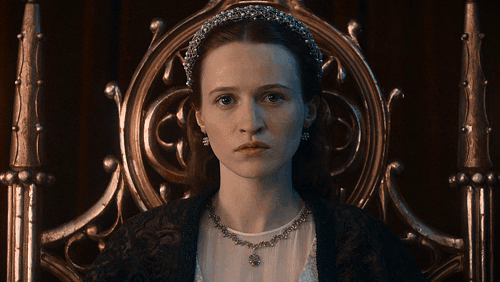




MARY OF BURGUNDY, THE RICH
Duchess of Burgundy, countess of Flanders, and archduchess of Austria, who fought to save her land from France and preserved what was to become the modern country of Belgium.
In Mary of Burgundy's days, Burgundy encompassed the area surrounding Dijon, Flanders, Picardy, and Brabant. It bordered France, Austria, and the English territories in the northeast part of continental Europe. The future of Burgundy was of utmost importance in the ongoing struggle for power between England and France, as well as in the many smaller conflicts throughout central and northern Europe. Mary's father, who was to be remembered as Charles the Bold, was the count of Charolois. Her grandfather, known as Philip the Good, reigned as the duke of Burgundy. Mary's mother was Isabelle of Bourbon , the second wife of Charles. His first wife Catherine de France had died young, with no children; Mary of Burgundy was therefore the sole heir to a large and rich territory.
Since Charles had no male heirs, potential marriages with Mary of Burgundy were plotted almost from the day of her birth on February 13,1457. Her entrance into the world was celebrated in a grand style, and her baptism at the cathedral of Coudenberg was considered "the greatest magnificence ever seen for a girl." This elegance may have been due to the political position of the child, or it simply may have been expected of the stylish House of Burgundy. Whatever the reason, the festivities lasted an entire day, and Louis of France, later to rule as King Louis XI, was appointed as Mary's godfather. Mary's grandmother, Isabella of Portugal (1397–1471), filled the role of godmother. Gifts were brought by representatives from across Europe, including some from a number of cities which were in rebellion against Duke Philip the Good at the time. Mary of Burgundy spent most of her childhood at the ducal castle of Ten Waele at Ghent. She enjoyed an affectionate relationship with her father, even though he was almost constantly away from her. Especially after 1465, when Charles became the duke of Burgundy, he was personally involved in controlling and governing the cities of his territory. He also developed a flair for conquering new cities, and military operations kept him occupied for months at a time. Isabelle of Bourbon died when Mary was eight years old, and the girl was raised primarily by Lady Hallewijn, the wife of the duke's chief steward. Lady Hallewijn was a constant companion and loyal attendant to Mary throughout her life. Several cousins and other children from noble families lived with the heiress as playmates during her childhood. Mary's great-aunt (possibly Agnes of Burgundy) was responsible for arranging the series of governesses that educated the young lady. Not much is known about Mary's education, but it is clear that she could speak French, Flemish, and English. She enjoyed reading fables and Roman histories, and may have had some training in political philosophy. Her later actions as reigning duchess suggest that she was prepared early in life to govern. Mary developed a keen interest in hunting, riding, and other outdoor sports, as well as in gardening. She cared for her falcons as if they were children; later in life, her husband would express surprise at Mary's insistence on keeping the birds in the bedroom, even within a few days of their wedding. Mary's personal seal was a picture of herself on horseback with a falcon on her wrist. She had a complete court of attendants from her infancy, including a dwarf named Madame de Beauregard. Mary soon made her choice among the many suitors for her hand by selecting Archduke Maximilian of Austria, the future Holy Roman Emperor Maximilian I, who became her co-ruler. The marriage took place at Ghent on 19 August 1477, when she was 20 years old, while he was two years younger. Mary's marriage into the House of Habsburg initiated two centuries of contention between France and the Habsburgs, a struggle that climaxed with the War of the Spanish Succession bethween 1701 and 1714. When they had time, the couple indulged themselves with dancing, hunting, music and the love for animals. Mary tried to teach him iceskating, which he struggled to master. They read romances together. Contrary to the custom of the time, Mary and Maximilian shared the same private quarters and bedroom. Mary nursed their children herself and used to dine with merchants from Dijon. She entusiastically cheered for her husband during tournaments, in which he exceled in jousting, not just in feats of strength but also in the luxury he lavished on the equipments, horses, accessories and ornaments. At first, they talked to each other in Latin. With Maximilian by her side, Mary's position became stronger, politically and militarily. Although he came with no money nor army, nor support from the Empire, and no prior experience in governance, his competence in military matters and his prestige as the son of an emperor boosted the stability of her territories. He took over the war effort, concerning both military and financial details. In 1482, a falcon hunt in the woods near Wijnendale Castle was organised by Adolph of Cleves, Lord of Ravenstein, who lived in the castle. Mary loved riding and was hunting with Maximilian and knights of the court when her horse tripped, threw her in a ditch, and then landed on top of her, breaking her back. She died several weeks later on 27 March from internal injuries, having made a detailed will. She was buried in the Church of Our Lady in Bruges on 3 April 1482. She was pregnant at the time. Maximilian was devastated. She had initially hidden the extent of her injury to calm him down. When he continued to display uncontrollable grief, she had to force him out of her chamber so that she could discuss matters of the state with her vassals, concerning which she asked them to keep their loyalty oath to him and their children. Maximilian was not present when she said her last words.
#mary of burgundy#house of habsburg#habsburg#maryandmaximilliam#duchyofburgundy#historicalwomen#history#european history#royal women
30 notes
·
View notes
Note
Do we know the favorite books that the French revolution figures liked to read? (It could be anyone, Robespierre or Saint just or Louis xvi it doesn't matter).
Much like this old ask about revolutionaries’ favorite dishes, I can’t say I know of any instance of someone exclaiming: ”this is 100% my favorite book,” but at tops people mentioning books that they thought were good or bad:
In his memoirs, Brissot writes he’s picking up Rousseau’s Confessions for the sixth time, so I guess that could qualify as a favorite book? send help
We have this list of books seized at Robespierre’s place after his death.
According to the memoirs of Élisabeth Duplay, Robespierre would read ”the works of Corneille, Voltaire and Rousseau” for her family in the evenings.
In a short biography over Desmoulins written in 1834, Marcellin Matton claims his favorite book was René Aubert de Vertot’s Histoire des révolutions arrivées dans le gouvernement de la République romaine (1719), of which he always carried a copy. Matton is an infamous romanticizer it’s from him we have the stupid leave myth for example, but I’m willing to give him some leeway here since he could have obtained the information from Camille’s mother-in-law and sister-in-law, who were his friends:
In one of his first classes, he received Vertot's Révolutions romaines as a prize. Reading this work transported him with admiration; in the future, he always had a volume in his pocket. It was for him an indispensable companion, it was his vade mecum. He used or lost at least twenty volumes. It is perhaps to this excellent work and to the particular work that he did on the discourses of Cicero and especially on his Philippics, that we owe the lively and sharp style which distinguishes all the writings coming from the pen of Camille .
Desmoulins was however less fond of Rousseau’s Confessions, in number 55 (December 1790) of Révolutions de France et de Brabant he admits that he abandoned the book after getting infuriated by it:
Not that I idolize J.J. as I did in the past, since I saw in his Confessions that he had become an aristocrat in his old age. How far he was from looking at an Alexander with the pride of this Cynic, to whom he is compared, and how painfully I saw that he united the opposite faults of Diogenes and Arisippus! It is a pleasant thing to hear the author of the Social Contract protest in his Confessions about the simplicity of the commerce of such great lords (M. and Madame de Luxembourg) he cries with joy, he wants to kiss the feet of this good marshal, because he wanted to accompany one of his friends, an office clerk, for a walk. Is there anything smaller, more ridiculous? I received, he says elsewhere, the greatest honor that a man can receive, the visit of the Prince de Conti, (an honor that Rousseau shared with all the girls of the Palais-Royal.) At this point I tossed away the book out of spite, and I admit, that I had to reread the speech on equality of conditions, and Julie's novel, in order to not hate the philosopher of Geneva, like Durosoy and Mallet du Pan; for the same principles, in the mouth of such a great man, are more condemnable and worthy of aversion than in the mouths of our two gazetteers, whom God created poor in spirit, and predestined as such to the kingdom of heaven.
In a diary kept over the summer of 1788, Lucile Desmoulins mentions reading L’Âge d’Or (1782) by Sylvain Maréchal (of which she also copied two verses, Le Trésor and Le contrat de mariage devant la nature, in a notebook the year earlier), Les Idylles et poèmes champêtres (1762) by Salomon Gessner, L’Hymne au soleil, suivi de plusieurs morceaux du même genre qui n’ont point encore paru (1782) by Abbé de Reyrac (where she wrote down the verse La Gelée d’avril), Nouvelles lettres anglaises, ou Histoire du Chevalier Grandisson (1754) by Samuel Richardson and Les Noces patriarchales, poëme en prose en cinq chants (1777) by Robert Martin Lesuire.
In his memoirs, Buzot mentions enjoying the works of Rousseau and Plutarch:
With what charms I still remember this happy period of my life which can no longer return, when, during the day, I silently roamed the mountains and woods of the city where I was born, reading with delight some works of Plutarch or of Rousseau, or recalling to my memory the most precious features of their morality and their philosophy. Sometimes, sitting on the flowering grass, in the shade of some thick trees, I indulged, in a sweet melancholy, in the memories of the sorrows and the pleasures which had in turn agitated the first days of my life. Often the cherished works of these two good men had occupied or maintained my vigils with a friend of my age whom death took from me at thirty, and whose memory, always dear and respected, has preserved from many errors!
Wow any chance you can sound even more like an 18th century man stereotype, Buzot?
…and that’s basically all I can come up with for the moment. But add on if you know anything more! @louis-antoine-leon-saint-just @lazarecarnot maybe you would like to share your favorite books with us if you have any?
#frev#ask#robespierre#desmoulins#lucile desmoulins#buzot#brissot#camille actually being the only sane person
28 notes
·
View notes
Note
🍄
I am happily married, and also happen to fall in the generational gap for royals where there aren’t any about my age that I would be romantically attracted to. (Having said that: I would be so down for a friendly hangout with the Duchess of Brabant.)
So I’m going to go back in time and choose Louis-Napoléon, Prince Impérial.

I think it would be fascinating to sit down with him for an evening and get a feel for who he really was, beyond the mythology of his family and the circumstances of his death. Also, I am convinced that he and Princess Beatrice (Queen Victoria’s youngest daughter) were in love, and would enjoy (politely) picking his brain on the subject.
Ask me a question from the royal ask game!
1 note
·
View note
Text
Experience the Best of Mauritius with Our 8D/7N Tour Package

Mauritius, the jewel of the Indian Ocean, offers a paradise for travelers seeking beauty, serenity, and adventure. With its endless beaches, azure lagoons, and lush greenery, this island is nothing short of magical. Our 8D/7N Mauritius Tour Package takes you on a complete exploration of the island’s best attractions, ensuring you experience the perfect balance of nature, culture, and leisure. Whether you are traveling with your family, friends, or as a couple, this package promises a memorable experience that will leave you with lifelong memories.
Highlights of the 8D/7N Mauritius Tour Package
Day 1: Arrival and Beachside Relaxation
Arriving in Mauritius: On the first day of your holiday, you will be welcomed at the airport by our friendly staff who will escort you to your hotel. Depending on your arrival time, you can relax and enjoy a peaceful evening on the pristine beaches near your accommodation.
Check-In and Leisure: After checking into your hotel, you have the option to unwind by the pool or enjoy the view of the Indian Ocean. This evening, indulge in a delicious Mauritian dinner at the hotel, preparing yourself for the adventure ahead.
Day 2: Discovering the North of Mauritius
Grand Baie: Begin your journey by exploring Grand Baie, a bustling coastal town that is known for its shopping, vibrant nightlife, and beautiful beaches. Enjoy a walk along the bay, browsing the local shops or simply soaking in the beauty of the surroundings.
Pamplemousses Botanical Garden: Visit the historical Pamplemousses Botanical Garden, one of the oldest botanical gardens in the Southern Hemisphere. The garden is home to over 500 species of plants, including the famous giant water lilies.
Cap Malheureux: Explore Cap Malheureux, a picturesque village that offers breathtaking views of the ocean and nearby islands. The red-roofed church here is a popular landmark and a great spot for photos.
Le Caudan Waterfront: In the evening, visit the Le Caudan Waterfront in Port Louis for shopping, dining, and entertainment. This is the perfect spot to enjoy the vibrant atmosphere of Mauritius’ capital city.
Day 3: Exploring the South of Mauritius
Trou aux Cerfs: Start your day with a visit to Trou aux Cerfs, a dormant volcanic crater that offers panoramic views of the island. The cool, misty atmosphere here provides a refreshing experience.
Grand Bassin: Next, visit Grand Bassin, a sacred lake where Hindus come to pray. The peaceful surroundings and the temples dedicated to Lord Shiva make this a serene stop on your tour.
Black River Gorges National Park: Continue your exploration of nature at Black River Gorges National Park, where you can enjoy lush greenery, waterfalls, and the park’s diverse wildlife.
Chamarel Waterfalls and Seven Colored Earths: Conclude your day by visiting Chamarel Waterfalls and the Seven Colored Earths, one of the island’s most famous natural wonders. The vibrant colors of the earth, combined with the scenic beauty of the falls, make for an unforgettable sight.
Day 4: Ile aux Cerfs Day Excursion
Full Day at Ile aux Cerfs: Set off for Ile aux Cerfs, a stunning island off the eastern coast of Mauritius. Spend the day enjoying water sports such as snorkeling, parasailing, and underwater walking. You can also simply relax on the white sandy beaches or indulge in a beachside barbecue.
Optional Water Sports: For those seeking more adventure, the island offers activities like water skiing, tube rides, and boat rides, making it the perfect place for thrill-seekers.
Day 5: The Beauty of Le Morne
Le Morne Brabant: On day five, head to the southern tip of the island to explore Le Morne Brabant. This UNESCO World Heritage Site is famous for its history as a slave refuge and its stunning mountain views. Hiking to the summit is an exhilarating experience that rewards you with panoramic vistas of the island.
Le Morne Beach: After your hike, relax at Le Morne Beach, one of the most beautiful and peaceful spots in Mauritius. The beach is perfect for swimming or simply lounging in the sun.
Optional Activities: In the afternoon, take a trip to the Rhumerie de Chamarel, where you can learn about the local rum-making process and taste some of the finest Mauritian rums.
Day 6: Catamaran Cruise to Explore the Coastal Wonders
Catamaran Cruise: Set sail on a luxurious catamaran cruise that will take you along the coastline of Mauritius. You’ll have the chance to snorkel in the crystal-clear waters, explore secluded coves, and enjoy the stunning scenery.
Barbecue Lunch on Board: Enjoy a barbecue lunch on board, with tropical fruits, fresh seafood, and local delicacies, all while soaking in the sunshine and beautiful views.
Day 7: Leisure Day
Relax and Explore: On the seventh day, enjoy some leisure time. You can opt to visit local markets, indulge in spa treatments, or take a boat ride to one of the nearby islands for some quiet time.
Optional Activities: For adventure lovers, you can visit Casela World of Adventures, where you can enjoy zip-lining, safari tours, and animal encounters.
Day 8: Departure
Final Morning in Mauritius: Spend your last morning in Mauritius enjoying the tranquility of the island before heading to the airport for your flight back home. Take with you fond memories of your tropical getaway.
Mauritius is an island of dreams, offering a perfect blend of adventure, relaxation, and natural beauty. Our 8D/7N Mauritius Tour Package is the ideal way to explore this tropical paradise and experience its best offerings. From pristine beaches to lush forests, from cultural landmarks to exhilarating water activities, Mauritius has everything you need for an unforgettable vacation. So, pack your bags and get ready for an adventure of a lifetime!
1 note
·
View note
Text
Mauritius tour package from chennai
Travel Tourister’s Mauritius Tour Package from Chennai is your gateway to an enchanting tropical getaway, combining breathtaking landscapes, vibrant culture, and unforgettable experiences. This meticulously crafted package includes round-trip flights from Chennai and luxurious accommodations that cater to all your comfort needs. Upon arrival in Mauritius, prepare to be mesmerized by the island's stunning beaches, clear turquoise waters, and lush green mountains. Engage in thrilling activities like snorkeling in coral reefs, deep-sea fishing, or simply relaxing on the pristine sands of Île aux Cerfs, renowned for its stunning beauty and water sports. Explore the rich cultural heritage of the island with guided tours to iconic landmarks such as Port Louis, the capital city, and the beautiful Le Morne Brabant, a UNESCO World Heritage site. Nature enthusiasts will love the breathtaking views at Black River Gorges National Park and the unique Chamarel Seven Colored Earth, showcasing the island's natural wonders. Indulge in the delicious local cuisine, which features a delightful blend of Creole, French, and Indian influences, making every meal a culinary adventure. With seamless airport transfers, expert guides, and 24/7 customer support, Travel Tourister ensures a hassle-free and memorable holiday experience. Whether you’re traveling for a romantic escape, a fun-filled family vacation, or a relaxing retreat, the Mauritius Tour Package from Chennai guarantees a perfect blend of adventure, relaxation, and cultural exploration, ensuring that your trip to this island paradise is truly unforgettable.
0 notes